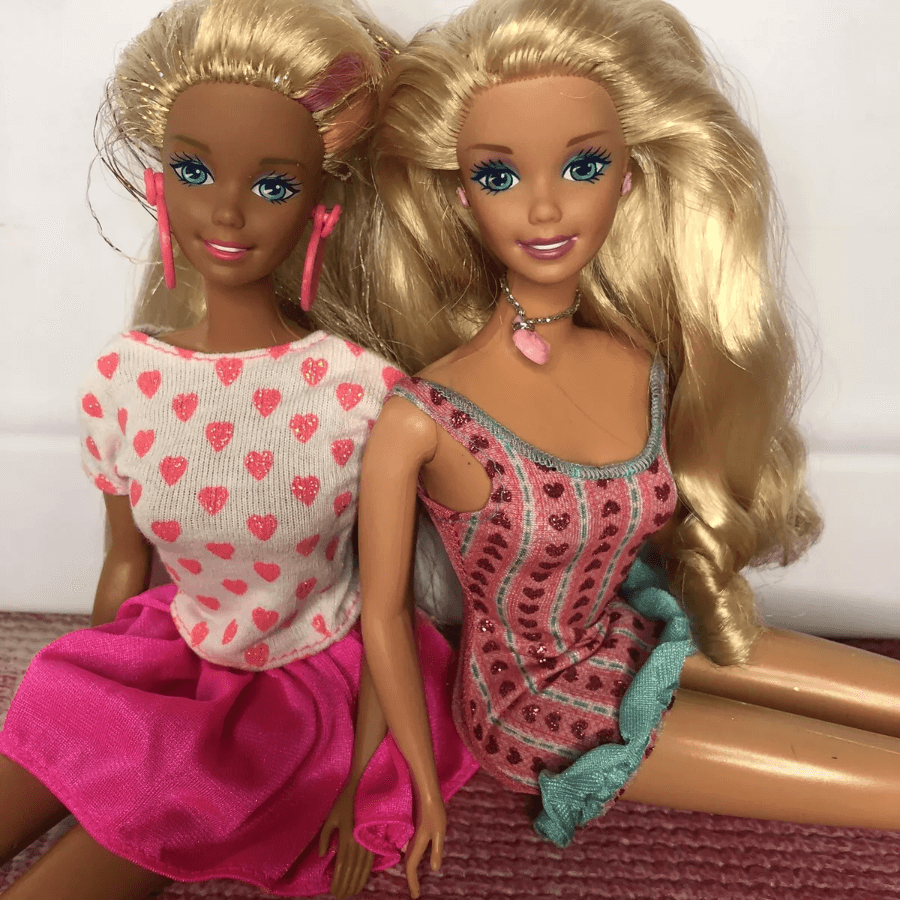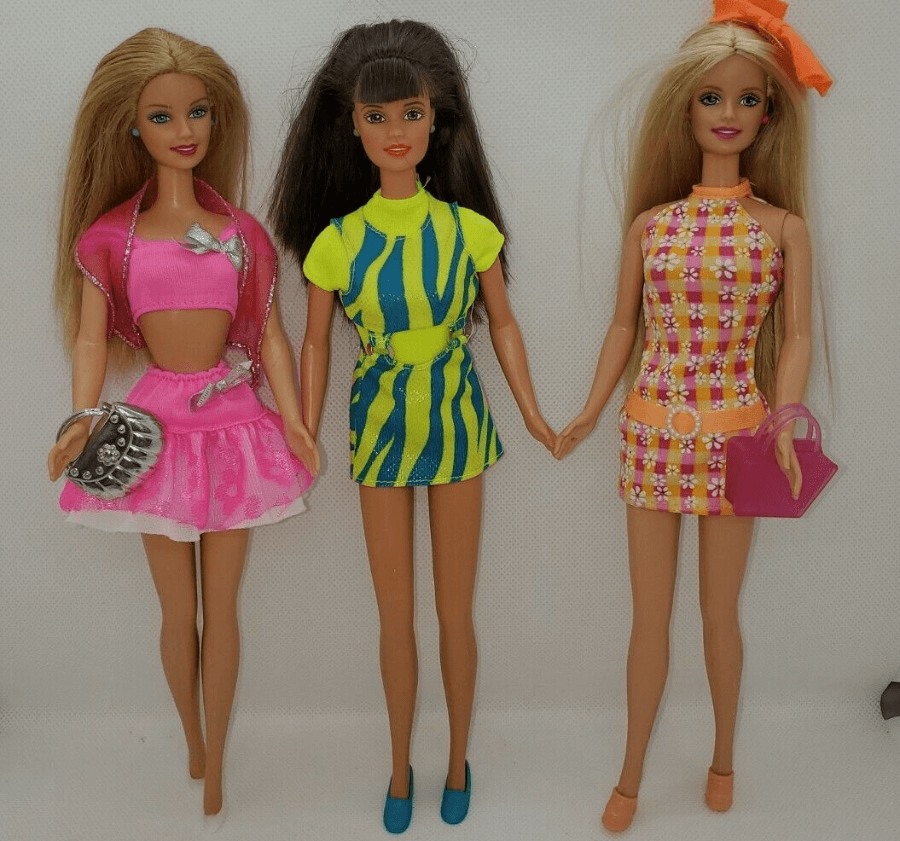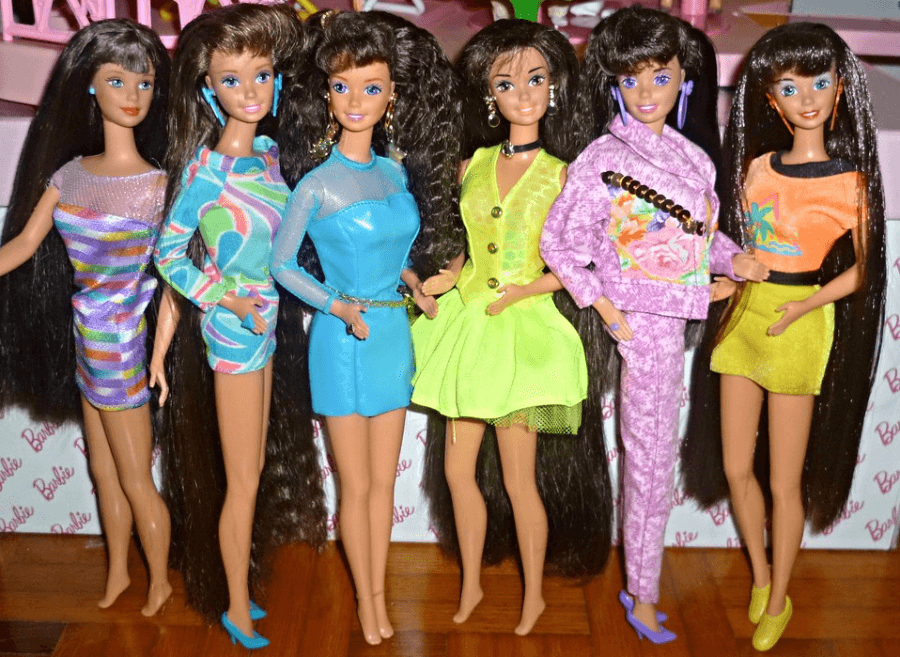📑Table of Contents:
The 1990s were a transformative period for Barbie. Mattel’s iconic doll evolved to reflect changing trends, cultural shifts, and the diverse aspirations of young girls worldwide. From dazzling outfits to career-themed dolls, 90s Barbie captured the imagination of a generation. This blog post explores the iconic dolls, fashion trends, and cultural impact that defined Barbie in the 90s. Join us on a nostalgic journey through this unforgettable decade.

The Evolution of Barbie in the 90s
Barbie’s transformation during the 90s mirrored broader societal changes. The doll became more inclusive, ambitious, and fashion-forward.
- Diverse Representation: Mattel introduced dolls of different ethnicities and skin tones, and Barbie’s friend group expanded to include people from various backgrounds.
- Career Barbie: Reflecting the growing empowerment of women, Barbie took on various professional roles. From doctors to astronauts, she inspired girls to dream big.
- Fashion Forward: The 90s were a vibrant decade for fashion. Barbie’s wardrobe featured bold colors, flashy patterns, and trendy accessories.
These changes made Barbie more relatable and aspirational for girls everywhere.
Iconic 90s Barbie Dolls
Several Barbie dolls from the 90s became iconic for their unique styles and themes. Let’s take a look at some of the most memorable ones.
- Totally Hair Barbie (1992)
- Description: Known for her incredibly long hair, this Barbie allowed girls to style and create various hairdos.
- Impact: Totally Hair Barbie became the best-selling Barbie doll of all time. Her popularity highlighted the 90s fascination with hair and beauty.
- Barbie and the Rockers (1990)
- Description: This line featured Barbie as a rock star with flashy outfits and musical instruments.
- Impact: The Rockers embraced the 80s and early 90s pop culture, reflecting the era’s love for music and performance.
- Day-to-Night Barbie (1991)
- Description: This doll featured a reversible outfit that transformed from professional work attire to glamorous evening wear.
- Impact: Day-to-Night Barbie symbolized the balancing act many women face between their careers and social lives.
- Holiday Barbie (1995)
- Description: Holiday Barbie dolls were released annually, each dressed in festive, elegant gowns.
- Impact: These dolls became collector’s items, celebrated for their intricate designs and holiday spirit.
- Doctor Barbie (1993)
- Description: Doctor Barbie came with medical tools and a lab coat, encouraging girls to envision themselves in STEM careers.
- Impact: This doll emphasized the importance of education and career aspirations, breaking traditional gender roles.
These dolls entertained, inspired, and empowered a generation of young girls.
Barbie’s Fashion Evolution

Fashion played a significant role in Barbie’s identity during the 90s. Her outfits reflected the trends and styles of the decade.
- Bold Colors and Patterns: Barbie’s wardrobe included neon colors, bold prints, and mix-and-match pieces. These styles mirrored the 90s fashion scene.
- Accessories Galore: Barbie’s accessories were as trendy as her outfits, from oversized sunglasses to chunky jewelry.
- Themed Fashion Lines: Collections like “Fashion Avenue” offered a variety of outfits for different occasions. This line allowed girls to dress Barbie for any event, from casual outings to formal galas.
Barbie’s fashion evolution showcased the decade’s creativity and experimentation in style.
Cultural Impact of 90s Barbie
In the 1990s, Barbie wasn’t just a toy; she was a cultural icon. Her influence extended beyond playtime, affecting broader cultural trends and conversations.
- Media Appearances: Barbie starred in animated movies, TV shows, and commercials. These appearances cemented her status as a pop culture phenomenon.
- Merchandise: Beyond dolls, Barbie’s image was used on clothing, school supplies, and home décor. This widespread presence made her a household name.
- Inspiring Dreams: Barbie’s diverse careers and inclusive representation encouraged girls to pursue their dreams. She became a symbol of possibility and empowerment.
Barbie’s cultural impact in the 90s reflected and influenced the aspirations and interests of young girls worldwide.
Collecting 90s Barbie Dolls
Many enthusiasts and collectors seek 90s Barbie dolls for their nostalgic value and unique designs.
- Collector’s Editions: Special edition dolls from the 90s are highly sought after. These dolls often come in limited runs and feature elaborate costumes.
- Preserving Value: Collectors value dolls that are in mint condition. Original packaging, accessories, and documentation enhance a doll’s worth.
- Community and Events: Barbie conventions and collector’s clubs provide platforms for enthusiasts to connect, trade, and celebrate their passion.
Collecting 90s Barbie dolls is a way to preserve a piece of childhood and celebrate the decade’s iconic trends.
Barbie’s Legacy and Continued Evolution
Barbie’s evolution didn’t stop in the 90s. The doll continues to adapt and reflect societal changes, remaining relevant to new generations.
- Modern Representation: Barbie now includes dolls of various body types, abilities, and gender identities. This inclusivity ensures that all children can see themselves in Barbie.
- Career Expansion: Barbie continues to explore new careers, keeping pace with changing job markets and societal expectations.
- Sustainable Practices: Mattel has taken steps to produce Barbie dolls using more sustainable materials, reflecting a growing awareness of environmental issues.
Barbie’s legacy of adaptation and innovation ensures she will continue inspiring and entertaining for years.

Final Thoughts
The 90s were a defining decade for Barbie, marked by significant transformations and cultural impact. From diverse representation and ambitious career dolls to bold fashion statements, 90s Barbie captured the spirit of the times. As we look back on this iconic era, we celebrate Barbie’s influence and the joy she brought to countless children. Her legacy continues to evolve, proving that Barbie is more than just a doll—she’s a timeless symbol of creativity, empowerment, and possibility.
Lastly, nostalgia for 90s Barbie reminds us of the joy and inspiration that toys can bring. As Barbie continues to adapt to new generations, her influence remains strong. Reflecting on her journey through the 90s, we appreciate the memories and dreams she helped create. Barbie’s story continuously evolves, ensuring she always holds a special place in our hearts.





